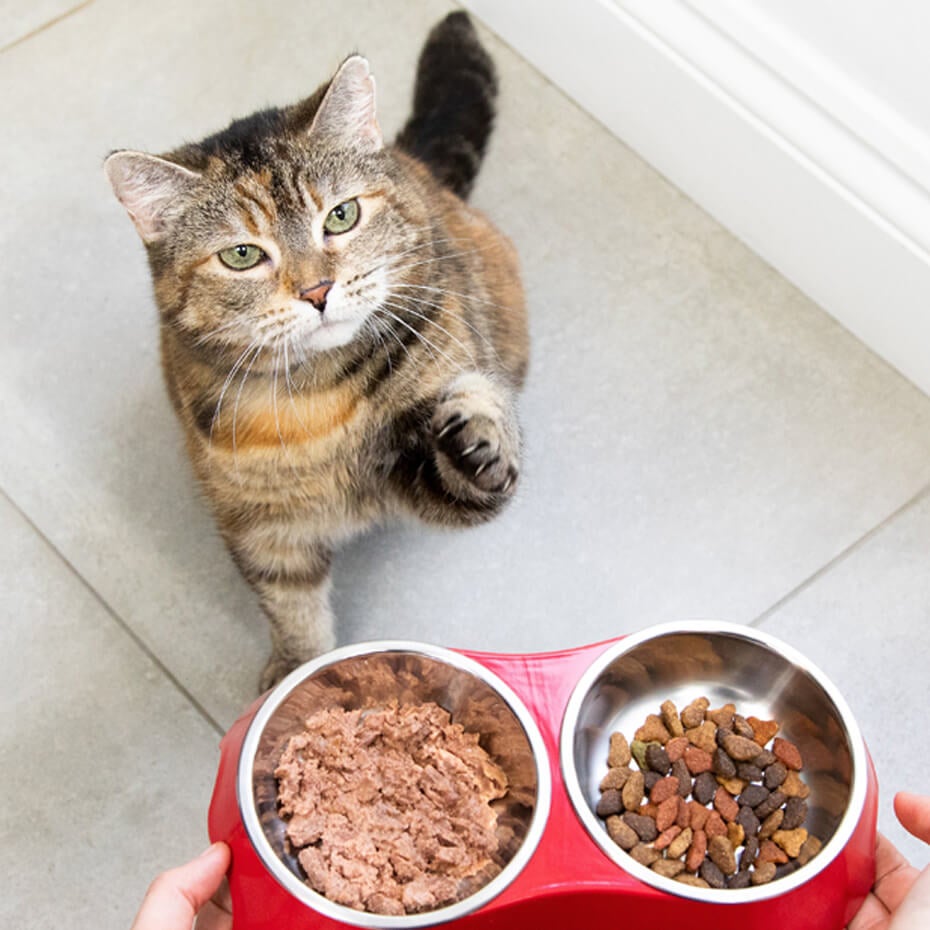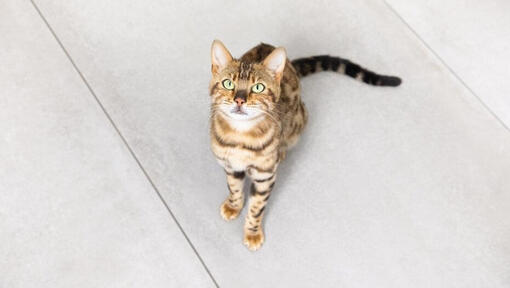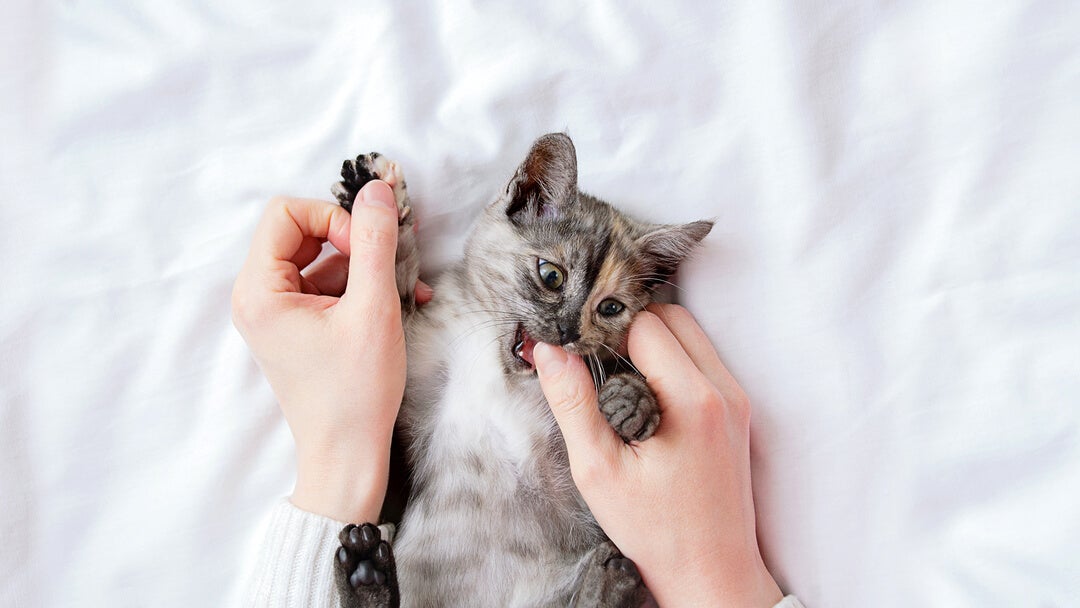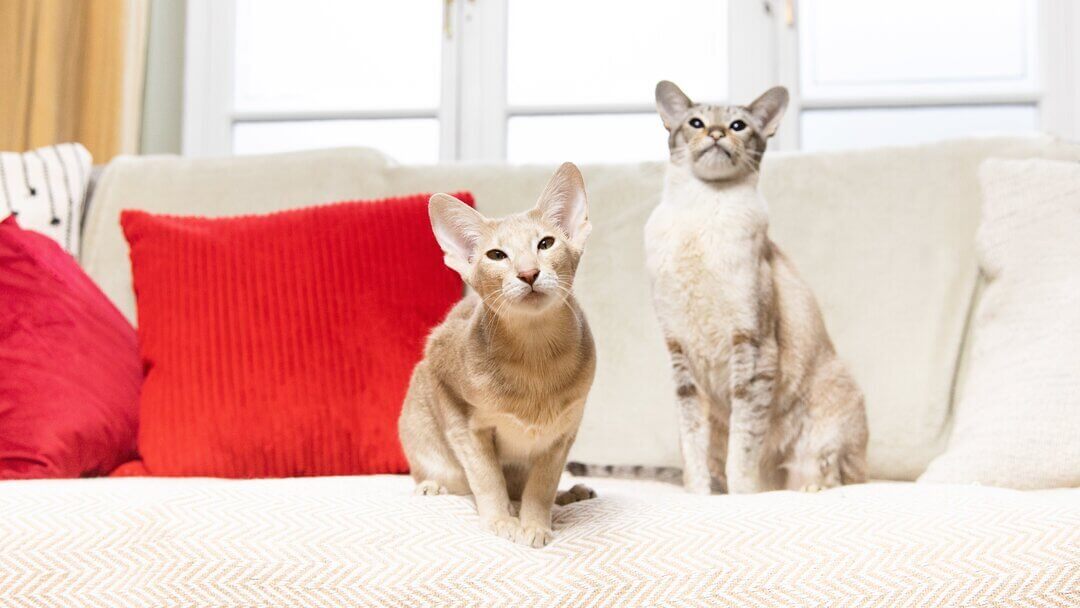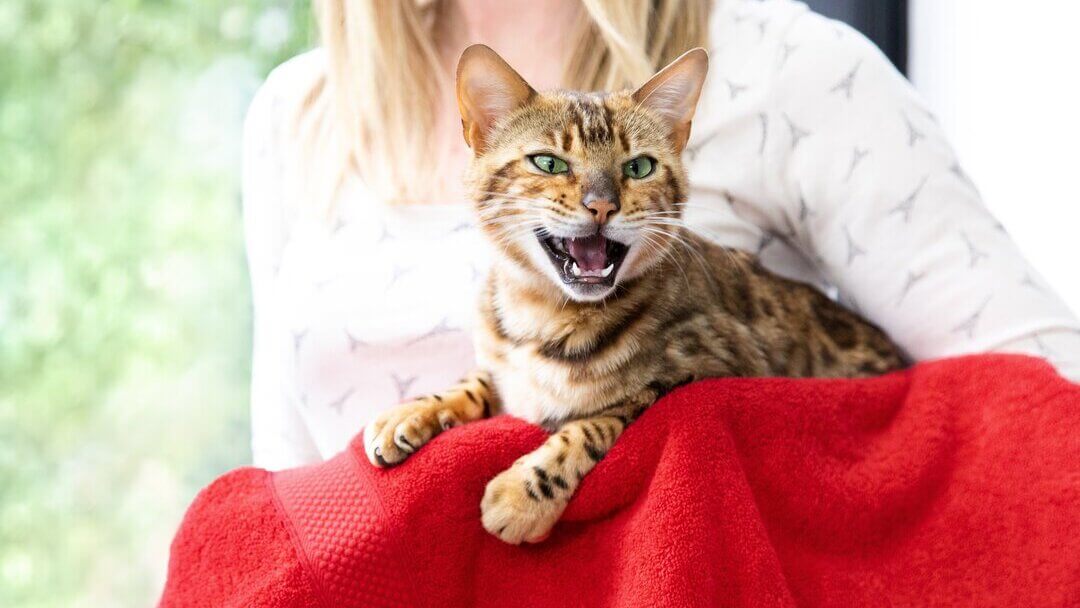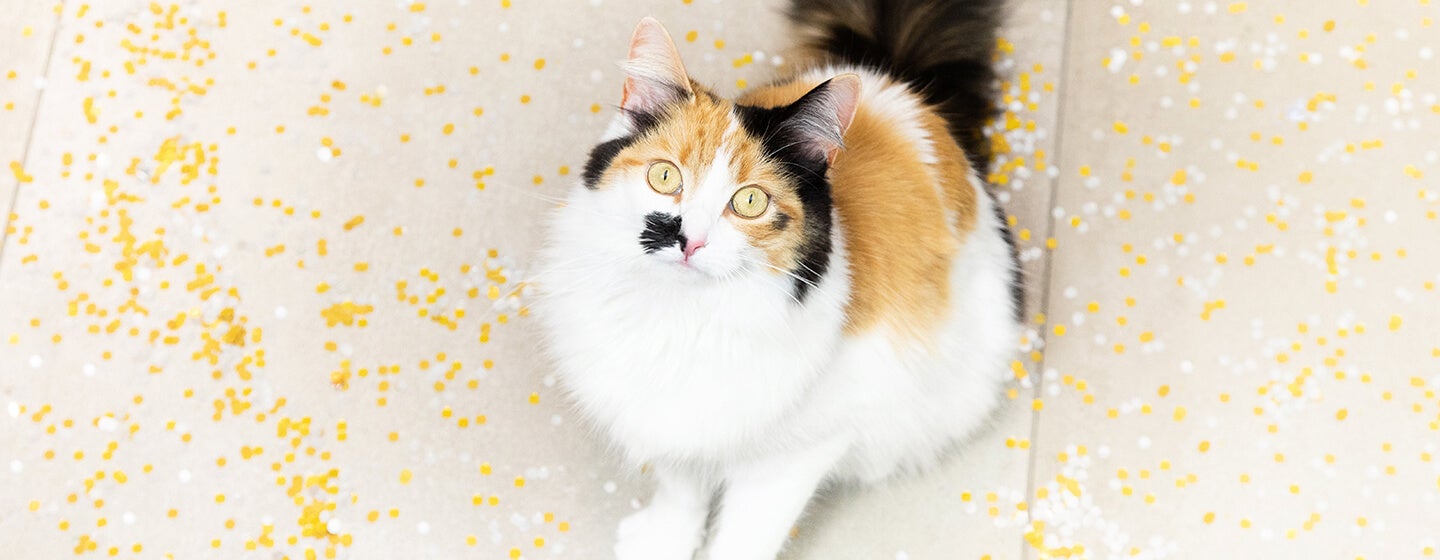
Although training is more traditionally associated with dogs, you can also teach your cat a few tricks, too! Your moggy can learn to recognise their name and come to you when you call them. To help your pet pick up these skills, it’s important to train your kitten from an early age and as soon as possible.
Teaching your kitten social skills
Training kittens starts with their social skills – the more they are exposed to at a young age, the less will shock or surprise them as they get older. From almost as soon as they can walk around without mum’s help, kittens will approach new situations with the confidence and curiosity that cats are so famous for! Kittens will be at their least fearful between the ages of 3-7 weeks, so will be more open to and accepting of new experiences and changes in their environment. After this age kittens will become more cautious, so it’s important that your breeder or rescue shelter introduces your pet to as much as possible before you collect them, ideally between 8-13 weeks old (depending on their breed and breeder).
Of course, your kitten's emotional development doesn't just stop at 12 weeks old, so you can continue to train your kitten once you’ve got them at home. Try some of these tips to help your kitten develop even further:
- Invite a variety of friends to your home to help your kitten get used to all sorts of different people – different ages, genders, heights, hair colour and more!
- If you don't have children, invite some along, making sure you let them know to take care around the kitten, especially when they meet them for the first time.
- You may know someone with a cat-friendly dog. If so, ask them to bring their pet to meet your kitten. The dogs must be well trained and able to “stay” – even in the excitement of meeting a new friend!
- While training your new kitten, take them out in the car for short trips to get used to car travel from a young age. Offer a special treat when you return to the house so that they associate travelling with a positive reward.
How to begin kitten training
Once your cat has mastered basic social skills, you can begin training your kitten to learn other things. Before you start, it’s advised to have a full check-up at the vet to make sure your pet doesn’t have any underlying medical conditions that could cause issues during training, such as joint or hearing problems.
Hopefully your cat will be perfectly healthy, so you can start to teach them a few useful tricks. These general pointers can help you and your kitten or cat get the most out of your training sessions:
- Emphasise the spoken cue you use to teach your cat what to do (such as “sit”) by speaking clearly and confidently, and reinforcing with positive praise – for example “sit, good, sit”.
- Use a food-based reward as reinforcement during kitten training. After all, wouldn’t you be more willing to work harder if you know there’s a tasty treat in it for you?
- Using a “clicker” or soft sounding bell when you give a treat to your cat will help them to associate that sound with a reward, so should learn to perform a task just by hearing that sound in the future.
- Train your kitten or cat before mealtimes, as a food reward won't be so enticing on a full stomach. At the same time, don't 'starve' cats to make them eager to learn; a hungry cat can quickly lose their patience!
- Try to eliminate background noise coming from a TV or stereo to help your cat stay concentrated.
- Keep sessions short, ending them before your cat gets bored or tired. Try sessions no longer than 15 minutes to keep your student fresh.
- Keep training session consistent, with the same trainer (either you or a professional, if you’re using one), cues, signals, and rewards.
- Wait until your cat has mastered one skill before trying to teach them another, or it may be too much for them to take in.
- Try to fit a 10-minute long training session in every day – sporadic sessions may not get you the results you want and could confuse your cat.
- Be patient! Training is bound to take time, so encourage your pet in each session with lots of positive praise and rewards for good behaviour. If your cat does something wrong, use a firm “no” before directing them to something else. For example – if they are knocking items off a surface, say “no” and dangle a toy for them to play with instead.
Now you know the basics of how to train your kitten or cat, you can move onto how to teach them specific tasks. Let the fun begin!
Naming your cat is a really exciting experience for all the family, so once you’ve chosen a name that you’re all happy with, you will want to say it as much as possible! This is great news for your cat, as they more you use their name, the more quickly they will learn that it belongs to them.
Say your kitten or cat's name repeatedly during enjoyable experiences, such as when they are eating or when you pet or play with them.
If your cat has been naughty, never shout their name. This will make your cat associate their name with negativity, so they might not come running as fast as you’d like when you next call them. This is especially important for outdoor cats.
Although a cat’s natural instincts naturally lead them to go to the toilet outside, they can easily adapt to use a litter tray, especially if taught from a young age. Older cats may also find a litter tray useful, even if they haven’t used one before, as their joints start to get stiff and they don’t have the same energy to get outside. There are several stages to follow to help your cat learn how to use a litter tray.
Some kittens may be litter-trained by the time you take them home, but if not, you can show them the ropes. To litter train your kitten, try gently placing them in the tray after they eat, when they wake up and if you see them sniffing, scratching or crouching on the floor – this can be a sign that they’re ready to go! Cat toilet training can sometimes take a little time, so be patient and stick with it.
Use a low-sided plastic tray during kitten training for easy access – you will want to swap to a larger, deeper tray as your cat grows up to give them enough room to turn around and prevent kicked up litter from escaping! If you’d like to minimise odours, spillage and give your adult cat more privacy during toilet time, you can use a covered tray – however, the enclosed space can make some cats nervous and they may not like to use it.
Some cats prefer using different types of litter. Whilst some like clumping “scoopable” litters, others may prefer a softer, finer grain – especially indoor cats that have softer paw pads, and older cats with arthritis. If you have to change the litter you use, do it slowly so that it doesn’t come as a surprise to your cat and put them off. Also avoid scented litters or tray liners, as they can upset your cat’s sensitive nose and put them off using the litter tray. Follow the instructions on the litter packing for recommended depth of litter; making sure that your cat has enough to dig with. Placing newspaper underneath the tray can help to catch any loose debris.
There should be one tray per cat, plus one extra in your house. Place each tray in a quiet area where your cat can do their business in peace, away from where your pet eats and drinks. Always make sure that the tray can be easily accessed, especially if your cat will be inside all day. As cats are very clean animals, they will hold on for as long as possible if there isn’t somewhere for them to go, which can be very uncomfortable and cause health problems.
Cats are naturally very clean, so it’s unlikely that they’ll use a litter tray that they’ve already soiled a lot, or in some cases even once. Some clumping litters make it easier for you to scoop solids and damp clumps out, which should be done daily. Empty the tray at least once a week, or more often if you’re not using a clumping litter, and wash the tray with hot water and detergent. Avoid using disinfectants, as they can be toxic to cats.
You should never handle soiled litter if you are pregnant due to the risk of toxoplasmosis – an infection that can be passed from you to your unborn baby.
If you’ve litter trained your kitten or cat but notice that they are still urinating in the house, it could be a sign of a feline lower urinary tract disease (FLUTD). This health issue can be painful and even potentially dangerous, so speak to your vet if you have any concerns about this, or any other health problem.
A vital part of training kittens is showing them when and where they should scratch, so that your sofa doesn’t suffer!
A scratching post can be a good surface for any urges your cat may have, but you may need to show them how to use it. Start but showing your kitten or cat the post, and dangling a toy along/around it to encourage them to play – when their claws hit the post, they should soon get the idea.
You can also try gently lifting your pet’s front paws and make downward, scratching motions on the post. This should show them how to use a scratch post, and they should try it for themselves soon. Adding a little catnip on the post can also help to make it more attractive for your pet to approach!
When your cat uses the post, praise them with lots of encouragement. The scent left on the post from your cat’s previous scratching should also attract them back to the post in future.
Like young children, kittens are filled with curiosity, excitement and energy! This means that they might not want to stay still in one place, or they might get restless when you cuddle them, no matter how much they adore you. The same is for older cats that you have perhaps rescued, as they are getting used to new surroundings and a new family, and so may want to explore to learn more before falling asleep on your lap.
Give your cat time to grow or adjust, and don’t force them to stay still or be picked up if they don’t want to be. With a little time, understanding and compromise, your cat will soon be as keen to cuddle as you are!




